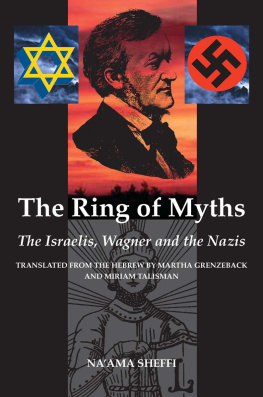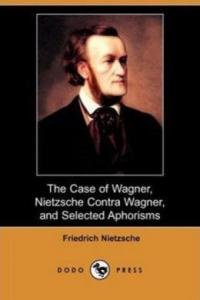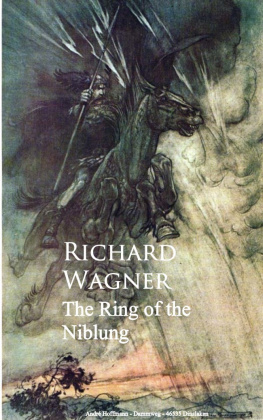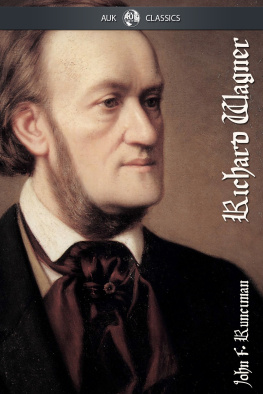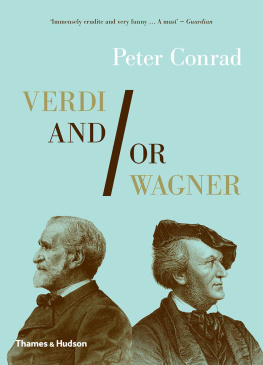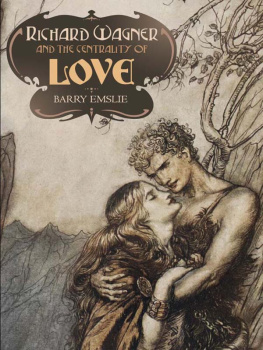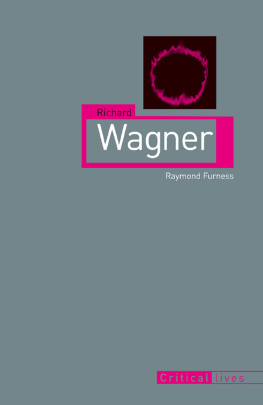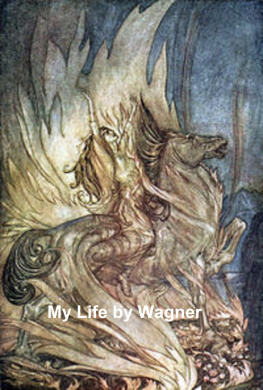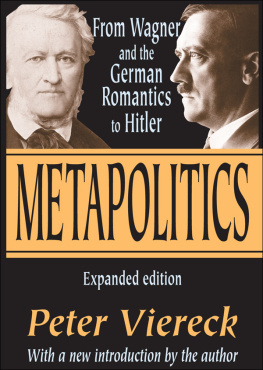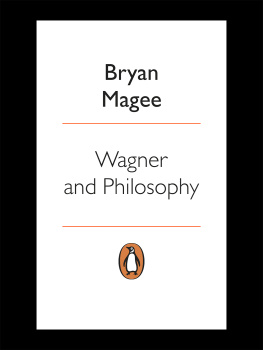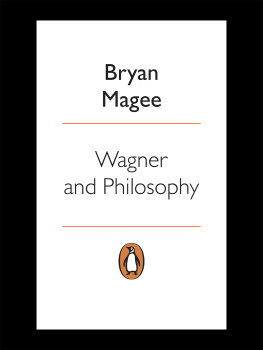In the fall of 1938, following Kristallnacht, the symphonic orchestra in Palestine cancelled the performance of Die Meistersinger von Nrnberg. No one could foresee that this would be the beginning of a never-ending boycott. The boycott began in a society struggling for its existence and collective identity; it continues in a well-established culture that maintains close ties with Germany and German culture, when numerous Israeli institutions are involved in commemorating the Holocaust. At present Wagner is known in Israel mainly as a symbol of the Holocaust.
From the late twentieth-century Wagner is the only composer who aroused strong opposition when attempts were made to publicly play his music. Analysis of this controversy sheds light on the changes that have taken place in Israel from a pioneering to a traditional society, and from a socialist to a capitalistic one.
In the Wagner Year The Ring of Myths appears in a revised edition, including interpretations from new perspectives on the place of the Holocaust in Israeli society and the processes of change until 2012.
Naama Sheffi teaches at the School of Communication at Sapir College, Sderot (Israel). She completed her studies in modern history at Tel Aviv University, and has published extensively on German and Israeli culture. Her publications include German in Hebrew: Translations from German into Hebrew, 18821948 (Hebrew, 1998; German, 2011). Currently she is conducting a new research on German translations into Hebrew since 1948.
Copyright Naama Sheffi 2001, 2013, 2014.
Published in the Sussex Academic e-Library, 2014.
SUSSEX ACADEMIC PRESS
PO Box 139
Eastbourne BN24 9BP, UK
and simultaneously in the United States of America and Canada
All rights reserved. Except for the quotation of short passages for the purposes of criticism and review, no part of this publication may be reproduced, stored in a retrieval system or transmitted in any form or by any means, electronic, mechanical, photocopying, recording or otherwise, without the prior permission of the publisher.
Chapter 5 was first published as, Cultural Manipulation: Richard Wagner and Richard Strauss in Israel in the 1950s, Journal of Contemporary History 34, no. 4 (1999): 61939. Reprinted by permission of Sage Publications Ltd.
British Library Cataloguing in Publication Data
A CIP catalogue record for this book is available from the British Library.
Library of Congress Cataloging-in-Publication Data
Sheffi, Naama.
[Tabaat ha-mitosim. English]
The ring of myths : the Israelis, Wagner and the Nazis / Naama Sheffi ; translated from the Hebrew by Martha Grenzeback and Miriam Talisman.
pages cm
Includes bibliographical references and index.
ISBN 978-1-84519-574-8 (p/b : alk. paper)
ISBN 978-1-78284-003-9 (e-pdf)
ISBN 978-1-78284-004-6 (e-pub)
ISBN 978-1-78284-005-3 (e-mobi)
1. Wagner, Richard, 18131883Public opinion. 2. Wagner, Richard, 18131883Relations with Jews. 3. MusicPolitical aspectsIsrael. 4. Public opinionIsrael. 5. Music and stateIsrael. 6. Music and antisemitism. I. Title.
ML410.W19S4513 2013
782.1092dc23
2012047408
This e-book text has been prepared for electronic viewing. Some features, including tables and figures, might not display as in the print version, due to electronic conversion limitations and/or copyright strictures.
Contents
Preface
Since Kristallnacht, the anti-Jewish pogrom that took place in Germany in November 1938, Richard Wagner (18131883) became persona non grata in Israels concert halls. Several days after the pogrom a work by Wagner was removed from the concert program of the Palestine Symphony Orchestra (which would become the IPO, Israel Philharmonic Orchestra) on ideological grounds. In Israel, Wagners identification with the racist views of National Socialism and vicious anti-Semitism made his musical oeuvre into one of the explicit symbols of the Holocaust and its atrocities. However, until 2012 no body, from the legislative and judicial authorities to the Board for Film and Theatre Review (the censorship board) and the broadcasting and orchestra institutions, ever publicly banned the performance of Wagners work.
Since the 1990s Wagner has been the only composer whose performance in Israel has stirred up bitter resentment. The ban on other composers, whom the orchestras and broadcasting authorities refrained from performing, was lifted. Franz Lehar, Carl Orff, and Richard Strauss all composers who collaborated with the Nazi regime are included in the programs of Israels large orchestras, and no longer arouse public controversy. Recordings of performers who collaborated with the Nazis to one degree or another, such as conductors Wilhelm Furtwngler, Herbert von Karajan and Karl Bhm, and sopranos, the German Elizabeth Schwartzkopf and the Norwegian Kirsten Flagstad, are broadcasted. From the outset Richard Strauss was the only musician who generated discontent similar to Wagner. As the founding director of the music chamber in the Nazi Ministry of Propaganda, Strauss was perceived as an ideological ally of the Nazis.
Attempts to play Wagner in Israel at the dawn of the twenty-first century met with bitter resentment. Such was the fate of the endeavours of the Israel Rishon LeZion Symphony Orchestra in late 2000, the encore to the concert of the Staatskapelle Berlin (Berlin State Opera) in the Israel Festival in the summer of 2001, and the initiative of the Israeli Wagner Society and Israeli-born conductor Asher Fisch in the spring of 2012. Concerning the latter event, no public hall could be found from the Tel Aviv University to the Tel Aviv Hilton to host a special performance of the Philharmonia Orchestra and soloists that were commissioned for one Wagner concert in Tel Aviv.
In the early days of the boycott, opposition was fueled by the recentness of the Holocaust; at that time Israelis were categorically united in their total rejection of anything that reminded them of the sinister twelve years of the Third Reich. Over the years, however, the hatred of Wagner seemed to become an obsession that permitted a degree of unity even in a state with a population divided between those who prayed and those who fought, those who labored and those who grew rich, those who wanted both sides of the Jordan River and those who wanted territorial compromise.
At least some of the opposition to Wagner appeared to be motivated by efforts to maintain the social unity of the early years by using the battle over the states relations with new post-1945 Germany as a rallying point. Perhaps preserving the evil in its original form would make it possible to sustain Israeli societys shared identity? Perhaps clinging to a past sown in the present would keep the precarious social unity intact? Yet that traumatic past was unlikely to foster the sense of social partnership that was so pervasive in the early days of the state. The new millennium is characterized by ever-increasing schisms in Israeli society. The commemoration of the Holocaust plays a major role in the identity of numerous Israelis. Yad Vashem, the states institution for the documentation and commemoration of the Holocaust, launches numerous projects every year. Teenagers, soldiers, civilians and politicians visit the memorial sites in Poland and throughout Europe. Nevertheless, the frequent use of the Holocaust as a political tool that represents the dangers Israel may face devalues its true moral importance in the eyes of many. Moreover, some sectors are indifferent to the subject, largely the extremists the ultra-Orthodox group, Neturei Karta, a small number of anti-Israel Palestinians, and a small group of racist teenagers, the majority immigrants of Russian-speaking origin.
Next page
